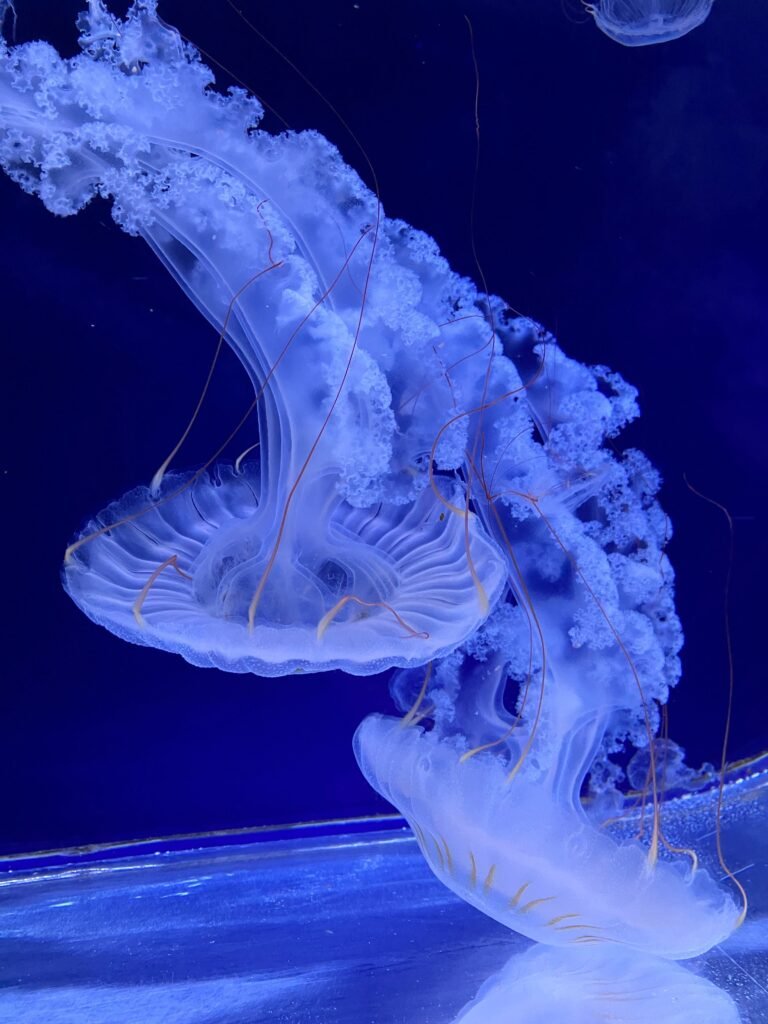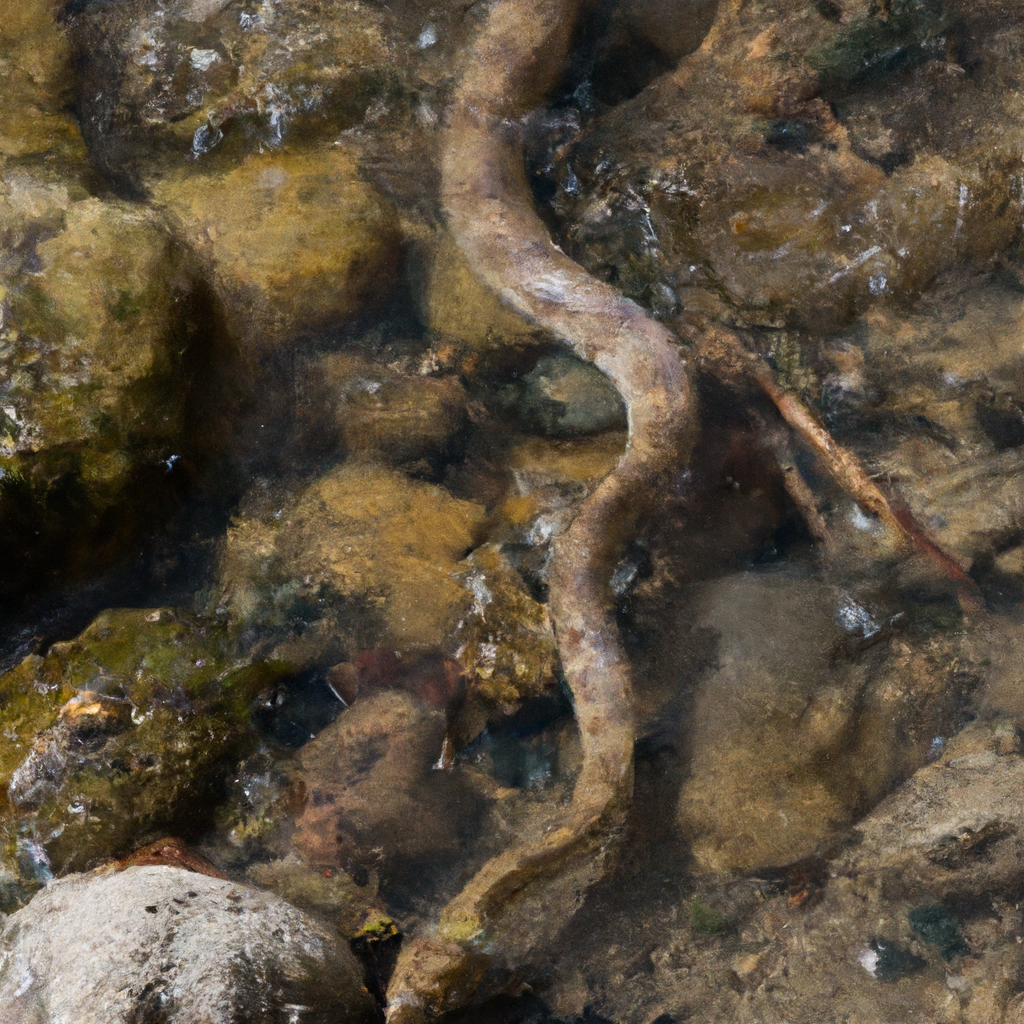Have you ever wondered what makes aquatic snakes so unique? In this article, we will explore the fascinating world of aquatic snakes and uncover some interesting facts about their behavior, adaptation, and habitat. From their ability to swim gracefully to their incredible hunting techniques, these serpent wonders are sure to capture your imagination. Join us as we delve into the curious world of aquatic snakes and discover what makes them truly remarkable.

Physical Characteristics
Size
Serpientes acuáticas, or aquatic snakes, exhibit a wide range of sizes, with some species being relatively small while others can reach impressive lengths. These snakes can measure anywhere from a few feet to several meters long. The size of a serpent acuática can depend on various factors, including the species, age, and sex of the snake.
Coloration
Aquatic snakes display a fascinating array of colorations, which can vary depending on the species and its environment. Some species have bold and vibrant colors, such as the neon blue of the blue garter snake, while others have more subdued patterns and hues. This diversity in coloration is often connected to the snake’s habitat and serves as a camouflage for hunting or evading predators.
Venomous or Non-Venomous
When it comes to venom, there is a distinction among aquatic snakes. Some species are venomous, possessing glands that produce toxins, while others are non-venomous, relying on their constriction abilities to subdue their prey. It’s crucial to note that not all aquatic snakes are venomous, and even among venomous species, the degree of danger they pose to humans can vary. It’s essential to exercise caution and respect around all wildlife, including aquatic snakes.
Habitat and Distribution
Freshwater Habitats
Aquatic snakes are well-adapted to thrive in various freshwater habitats, including rivers, lakes, ponds, and streams. They are frequently encountered in wetlands, swamps, and marshes, where they can find ample prey, shelter, and suitable conditions for reproduction. These snakes are highly versatile and can adapt to different water temperatures, depths, and currents.
Marine Habitats
While the majority of aquatic snakes inhabit freshwater ecosystems, some species have adapted to marine environments. These snakes can be found along coastlines, in estuaries, and even in the open ocean. They possess unique adaptations that allow them to navigate saltwater, such as specialized salt glands to excrete excess salt from their bodies.
Geographical Distribution
Aquatic snakes have a global presence, inhabiting various regions across the world. They can be found in North and South America, Africa, Asia, and Australia. Each geographic area boasts its own distinct species of aquatic snakes, contributing to the rich biodiversity of these unique reptiles.

Feeding Habits
Diet Composition
The diet of aquatic snakes primarily consists of fish, although some species may also feed on amphibians, crustaceans, and even small mammals. Due to their aquatic lifestyle, these snakes have evolved specialized adaptations for capturing and consuming slippery prey. Their jaws are flexible, allowing them to engulf fish larger than their head size, and their sharp teeth help secure their catch.
Hunting Techniques
Aquatic snakes employ a variety of hunting techniques to secure their meals. Some species, like the water moccasin, patiently wait in submerged vegetation or along the water’s edge, relying on their camouflaged appearance to ambush passing fish. Others, such as the sea snake, actively search for prey, swimming with fluid motion and utilizing their keen eyesight to locate fish.
Reproduction and Lifespan
Mating and Courtship
Mating and courtship behaviors among aquatic snakes can vary among species, but generally involve intricate rituals and displays. Male snakes often engage in combat or competition to secure a mate, with dominant males emerging victorious. Courtship displays may include intricate movements, intense colors, and even vocalizations, all aimed at attracting a suitable partner.
Egg-Laying and Incubation
After successful courtship and mating, female aquatic snakes lay eggs to ensure the survival of their offspring. These eggs are typically laid in warm, secure locations, such as underground burrows or dense vegetation. The incubation period can vary depending on the species and environmental conditions. Once the eggs hatch, the baby snakes are self-sufficient and must fend for themselves.
Lifespan
The lifespan of aquatic snakes can also vary, with factors such as species, habitat, and environmental conditions influencing their longevity. On average, aquatic snakes can live anywhere from 10 to 30 years in the wild, depending on various circumstances. Captive individuals may live longer, benefiting from consistent care and protection from predators and environmental hazards.

Behavior and Adaptations
Swimming Abilities
As their name suggests, aquatic snakes are highly adapted for life in the water. They possess streamlined bodies, which enable efficient movement through the water. Their scales are smooth, reducing drag and facilitating quick, agile swimming. Additionally, their tails are muscular and act as propellers, generating propulsion as they navigate their aquatic habitats.
Camouflage
Camouflage is a crucial adaptation for aquatic snakes, enabling them to blend seamlessly into their surroundings. Their coloration often matches that of their environment, whether it be the green of aquatic vegetation or the sandy bottom of a riverbed. This camouflage allows them to remain hidden from both potential predators and unsuspecting prey.
Defense Mechanisms
To defend against threats, aquatic snakes employ various defense mechanisms. Some species, like the venomous water moccasin, will exhibit aggressive behavior when feel threatened, warning potential predators of their dangerous capabilities. Other snakes may attempt to flee or hide if they sense danger. These defense mechanisms are essential for the survival of aquatic snakes in their natural habitats.
Interaction with Humans
Conservation Status
The conservation status of aquatic snakes varies depending on the species and their geographical location. Some species may face significant threats due to habitat destruction, pollution, and overexploitation. It’s crucial to understand and protect the habitats of aquatic snakes, as they play crucial roles in maintaining the balance of freshwater ecosystems.
Conservation Efforts
Conservation efforts for aquatic snakes encompass various initiatives, including habitat conservation, research, and public education. Organizations work to protect wetland areas, reduce pollution, and promote responsible practices that benefit aquatic snake populations. Research is also conducted to understand the ecological needs of these snakes better and develop strategies for their conservation.
Threats to Humans
While it’s essential to respect and appreciate aquatic snakes, it’s also important to be aware of potential risks. Venomous species, such as the water moccasin, can pose a threat to humans if provoked or cornered. However, these snakes prefer to avoid human interactions and will typically retreat if given the opportunity. By understanding and respecting their behavior and habitats, humans can coexist safely with these fascinating reptiles.

Mythology and Folklore
Cultural Significance
Throughout history, aquatic snakes have held cultural significance and featured in various myths and folklore from different cultures. They are often associated with water, representing themes such as transformation, rebirth, and fertility. In some ancient civilizations, aquatic snakes were revered as guardians or divine entities, symbolizing both the power and mysteries of the water.
Symbolism
Aquatic snakes have also been used as symbols in various cultures, representing a range of meanings. They can symbolize wisdom, knowledge, and healing due to their association with water, which is often regarded as a source of life and rejuvenation. The ability of aquatic snakes to navigate both land and water has also led to their association with adaptability and transformation.
Unique Species
Anaconda (Eunectes murinus)
One of the most iconic aquatic snakes is the anaconda. Known for its massive size and strength, the anaconda is the largest snake species in the world. It can reach lengths of up to 30 feet and is predominantly found in the freshwater habitats of South America. As a non-venomous constrictor, the anaconda captures its prey, such as rodents and even large mammals, by coiling around them and squeezing until they suffocate.
Water Moccasin (Agkistrodon piscivorus)
The water moccasin, also known as the cottonmouth, is a venomous aquatic snake found in North America. Recognizable by its dark coloration and wide, triangular head, this species is well-adapted to its freshwater habitats. While its venom is potent, bites and envenomation of humans are relatively rare. If encountered, it is essential to give the water moccasin space and avoid provoking it to ensure a safe interaction.

Interesting Facts
Predator-Prey Relationships
Aquatic snakes participate in fascinating predator-prey relationships within their ecosystems. For example, some species of aquatic snakes have evolved specialized adaptations to prey on toxic frogs, efficiently capturing and consuming them without being affected by the frogs’ potent toxins. These intricate relationships highlight the interconnectedness of aquatic ecosystems and the remarkable adaptations of aquatic snakes.
Regeneration Abilities
One intriguing ability of certain aquatic snakes is their capacity for regeneration. In particular, some species can regenerate lost or damaged body parts, such as their tails. This remarkable regenerative ability provides them with a survival advantage, allowing them to recover from injuries sustained during encounters with predators or while navigating challenging environments.
Research and Scientific Importance
Study of Aquatic Ecosystems
Aquatic snakes play a vital role in the functioning of aquatic ecosystems. Studying their behavior, distribution, and population dynamics provides valuable insights into the overall health and resilience of freshwater habitats. By understanding the needs and vulnerabilities of aquatic snakes, scientists can contribute to the conservation and management of these vital ecosystems.
Medical Research
Venomous aquatic snakes have long been of interest to medical researchers due to the unique properties of their venom. These venoms contain a variety of bioactive compounds that hold the potential for developing new medications, including painkillers, blood pressure regulators, and even cancer treatments. Research on aquatic snake venom continues to uncover promising avenues for medical advancements.
Behavioral Studies
Behavioral studies on aquatic snakes contribute to our understanding of their social interactions, mating habits, and hunting strategies. By observing and analyzing their behavior, researchers gain insights into the cognitive abilities and evolutionary adaptations of aquatic snakes. These studies aid in forming a holistic view of these intriguing reptiles and their intricate roles within their ecosystems.
As we delve into the curiosities of aquatic snakes, we discover the remarkable adaptations, behaviors, and ecological significance of these reptiles. From their diverse colorations to their specialized hunting techniques, aquatic snakes have captured the imagination of humans throughout history. By fostering a deeper understanding and appreciation for these fascinating creatures, we can contribute to their conservation and safeguard the precious ecosystems they call home.